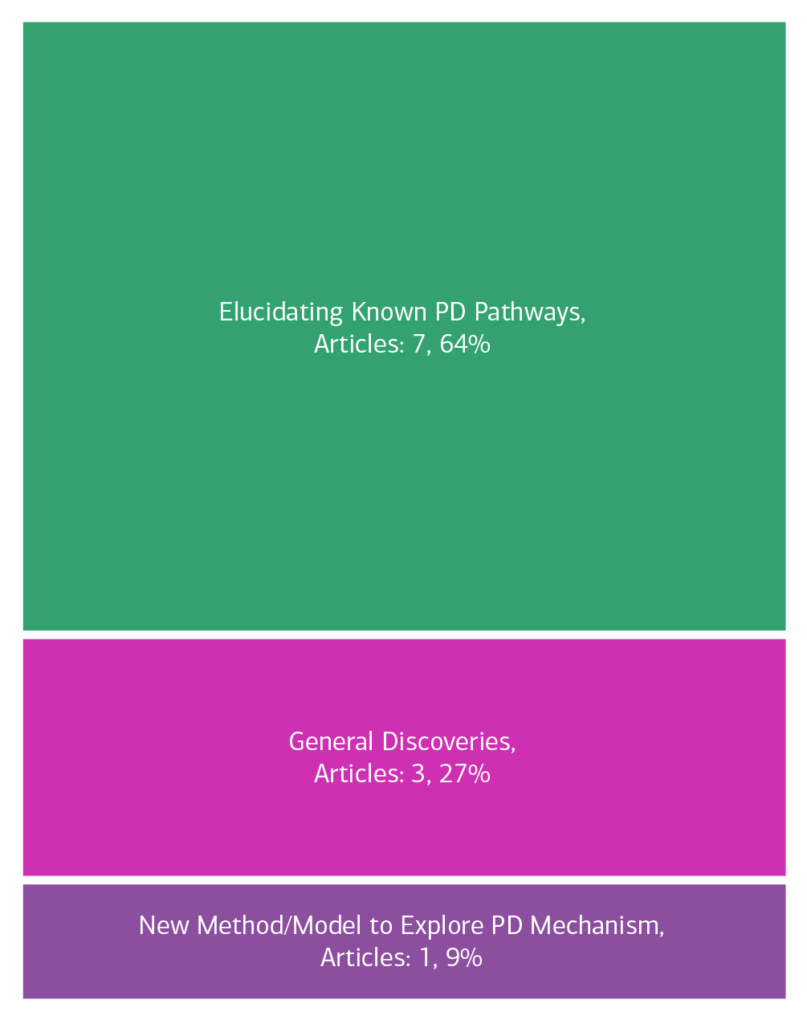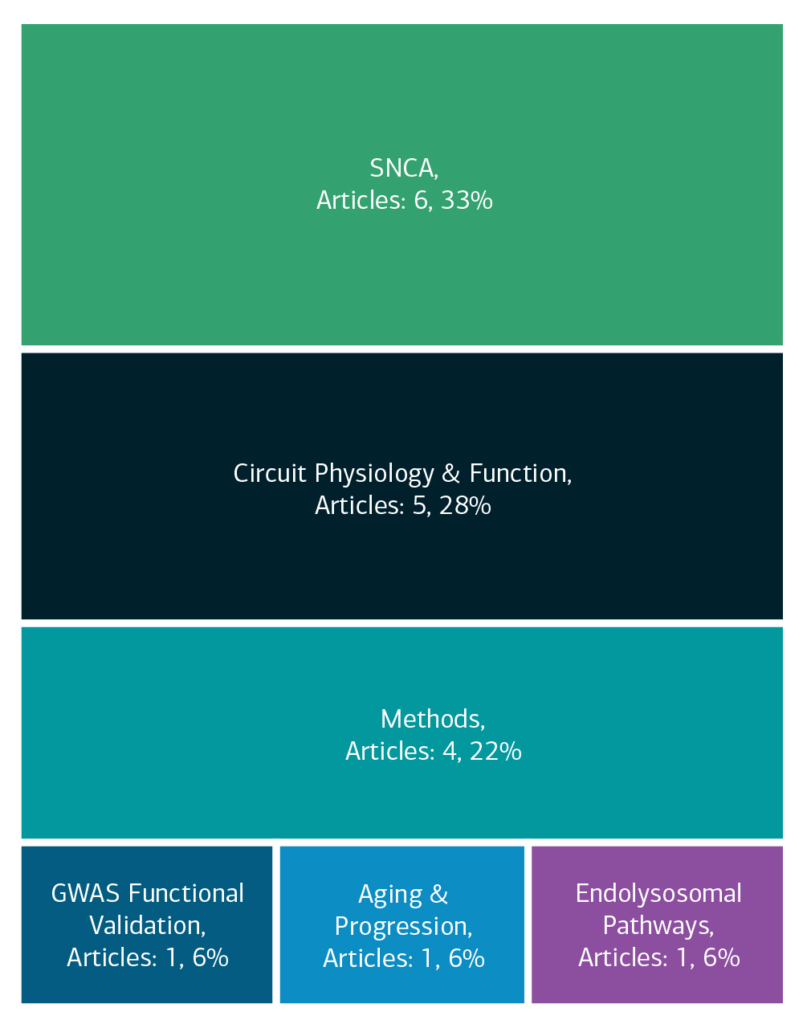Circuitry and Brain-Body Interactions | 2021
Understanding and Manipulating Cellular and Circuit-Level Vulnerability to Neurodegeneration in Parkinson’s Disease
Study Rationale: Many people with Parkinson’s disease (PD) develop untreatable cognitive symptoms, including problems with attention, decision-making, and dementia at late stages of the disease, due to changes in a crucial part of the brain, the cerebral cortex. Evidence suggests that aggregation of the protein alpha-synuclein in vulnerable nerve cells interferes with their health and damages the cellular networks required for normal brain function. However, the relationships between alpha-synuclein, vulnerable cells, and network activity are not understood. By identifying and understanding the causes and effects of this damage in brain networks, and affected nerve cells and their connections, Team Biederer aims to enable therapies that directly target this disorder.
Hypothesis: Team Biederer hypothesizes that networks of nerve cells in the cortex of the brain become dysfunctional because of damage caused by pathological deposits of the protein alpha-synuclein in vulnerable cells.
Study Design: Team Biederer will assess how alpha-synuclein pathology progressively impairs network function in the brain cortex and identify the features distinguishing vulnerable from resilient cells using innovative technologies, including imaging of activity in the live brain, measurements of attention, profiling of different cell types and their contents, and high-resolution microscopy of neuronal connections. The team will integrate these data using advanced computational methods to design and test cell-specific interventions to restore the function of the disrupted networks. This study will reveal mechanisms of cortical network damage in Parkinson’s disease and will identify the types of nerve cells suited for therapeutic intervention.
Impact on Diagnosis: Diagnostic biomarkers for PD can leverage Team Biederer’s findings of which types of neurons, their connections, and molecular markers are most affected. For treatment, Team Biederer’s work will define novel mechanisms that can directly restore network function by targeting specific types of cortical nerve cells and their connections.
Leadership
Project Outcomes
Team Biederer's project will gain mechanistic insight into PD pathology linked to progression to dementia. The team will integrate information across molecular, anatomical, and circuit domains, using mathematical modeling, to reveal and manipulate underlying cellular and network vulnerabilities in the cortex. View Team Outcomes.
Team Outputs
Click the following icons to learn more about the team’s outputs:
Overall Contributions
Here is an overview of how this team’s article findings have contributed to the PD field as of May 2025. There are two different categorizations of these contributions – one by impact to the PD community and a second by scientific category.
Impact

Category

Featured Output
Below is an example of a research output from the team that contributes to the ASAP mission of accelerating discoveries for PD.
Spatial transcriptomics reveals molecular dysfunction associated with Lewy pathology
In diseases, such as Parkinson’s disease, understanding which cell types are susceptible to developing pathology can help formulate an understanding of disease progression and can lead to the identification of pathways that can be targeted for therapy. Techniques such as spatial transcriptomics, a molecular profiling process that allows scientists to map the gene expression profile of cells found in specific locations in tissue samples, can provide vital classification information. Team Biederer conducted a large-scale spatial transcriptomics study on mouse brains that had been injected with PFF, a process that models Parkinson’s disease pathology through protein aggregation. The resulting data indicated that pathology leads to the induction of a specific gene expression signature in certain neurons. Further analysis of these genes in future studies will help to determine the functional consequences of these gene changes in aggregate-bearing neurons.
Team Accolades
Members of the team have been recognized for their contributions.
- Network Spotlights: Charlotte Brzozowski, Tina Matos, Thomas Goralski
- Open Science Champions: Michael Henderson, Laura Volpicelli-Daley
Other Team Activities
- Working Groups:
- PFF Gut-Brain – Laura Volpicelli-Daley (Co-Chair), Thomas Beach (Co-Chair)
- Trainee – Charlotte Brzozowski (Co-Chair)
- ANALYSE Neuropathology – Thomas Beach (Co-Chair)
In the News
- Van Andel Institute, Yale University and University of Pennsylvania scientists awarded grant from Aligning Science Across Parkinson’s (Van Andel Institute, press release, October 26, 2021)
- Yale researchers receive ASAP grant to study cognitive impairments of Parkinson’s disease (Yale School of Medicine, October 26, 2021)












